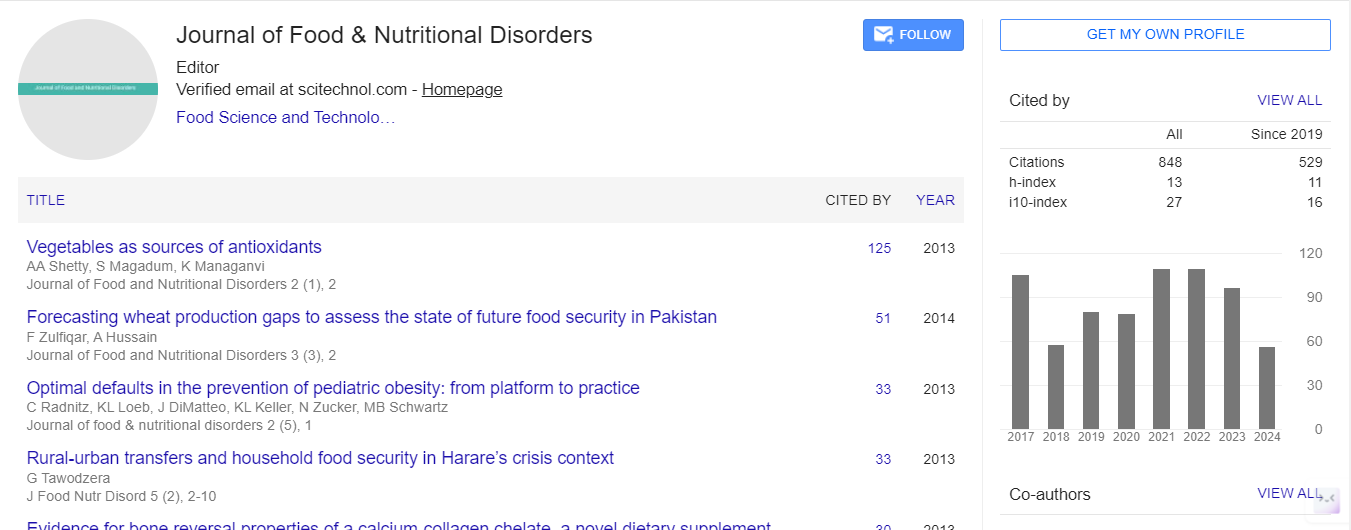Comparative evaluation of indigenous microencapsulated lactic acid bacteria with commercial products available in Allahabad city
Anil Pandey, Neelam Yadav, Pragati Shukla and Vinita Puranik
University of Allahabad, India
: J Food Nutr Disor
Abstract
Statement of the Problem: Food consortium of any geographical origin has relativity to the climate which constitutes health implications and ascertains their therapeutic utilities. The key to human health are health promoting bacteria of gut microbiota, which has close relevance to the food consumed by the community. Methodology & Theoretical Orientation: The current research was carried out to ascertain the efficacy of indigenous cultures of Lactic Acid Bacteria (LAB) isolated from local dairy products and compared with the commercial products available in local markets of Allahabad district. The cultures were isolated from curd, raw milk and buttermilk, which were among the dairy products consumed by the majority population. Isolated cultures were characterized through biochemical tests and molecular identification. The cultures were identified through Bergeys manual and PIBwin software. The isolates were mixed and freeze dried after microencapsulation in a modified matrix using starch, maltodextrin and sodium alginate is used response surface methodology. The microcapsules were prepared using simple extrusion technique in calcium chloride solution of 0.1 M. Findings: L. fermentum was obtained from curd and raw milk while L. casei was obtained from buttermilk. The molecular identification revealed the amplicon illumination at 400 base pair was suggestive of isolates belonging to Lactobacilli species. The results revealed compatibility with the commercial cultures based on viability in simulated gastric juice, simulated intestinal juice, antimicrobial activity, bile tolerance and antibiotic susceptibility test. The viability of isolates was found in the probable range with colonies above 106 cfu/g on comparison. Microencapsulated cultures showed prominent zone of inhibition against the known pathogens (i.e.) E. coli, Salmonella enterica and Shigella flexneri. Isolated cultures were found to resist probable viability in simulated gastric and intestinal juice which showed the efficacy of coating material (i.e.) starch, maltodexrin and sodium alginate. Conclusion & Significance: The study revealed the efficacy of indigenous cultures when compared to different brands that are available in market.
Biography
E-mail: anilp7794@gmail.com
 Spanish
Spanish  Chinese
Chinese  Russian
Russian  German
German  French
French  Japanese
Japanese  Portuguese
Portuguese  Hindi
Hindi 
